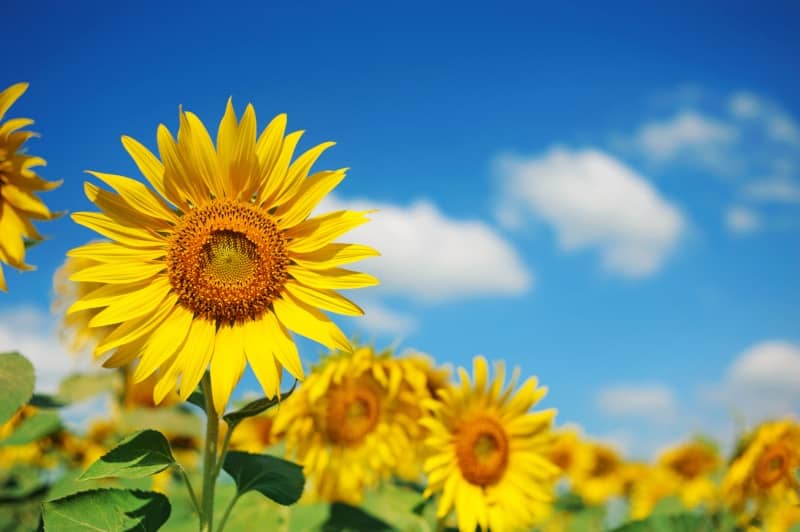Sunflowers: Can mutations make them bigger, better, and stronger?
Supplying food to an ever-growing human population is a global challenge. Augmenting crop yields and increasing their quality may allow us to tackle this problem, with selective breeding methods providing the tools to do so.
Induced mutagenesis – a technique that has become widespread due to advances in modern physics and chemistry – involves using a chemical or physical “mutagen” (i.e. something that causes a genetic mutation) to deliberately change an organism’s DNA. This can be applied in the context of selective breeding to create animals or plants that have specific properties that are rare, unusual or sometimes unnatural. In the case of agricultural crops, certain chemicals and physical factors (like x-rays and gamma rays) affect cells in a way that ensures the creation of promising and valuable mutations in the whole plant.
Hereditary information is encoded in our DNA by genes. These genes can affect the development of any morphological or physiological trait, and ensure the transmission of these traits from generation to generation. The chemical structure of genes is quite stable, however, it can be changed under the influence of mutagens, resulting in alterations in chromosomes and other parts of an organism’s cells. These mutations lead to the conception of “mutant” organisms with modified features and traits. By deliberately engineering these genetic changes, it is possible to create new starting material for selective breeding, and thus accelerate the development of new varieties of agricultural crops, such as hybrids that combine valuable features and traits.

Scientists from Ukraine recently investigated how induced mutagenesis in sunflowers could expand the genetic diversity of the genus and produce valuable results with regard to agricultural factors – their results were recently published in the journal Helia. Twelve different sunflower varieties with high yield, stress-resistance and combining ability (i.e. how well the plants combine to create a hybrid) were selected for induced mutagenesis.
The objective was to improve certain characteristics of these sunflower varieties – such as the seeds’ oil content and quality, height, disease-resistance etc. Both a chemical mutagen (dimethyl sulfate) and a physical mutagen (gamma rays) were used to disrupt the genes of sunflower seeds, the effects of which were compared to other sunflower seeds that were soaked in distilled water as a control.
New, unique and valuable mutations were induced, identified and described, the scientists say. Furthermore, a genetic collection of morphological mutants with altered quantitative and qualitative traits was created. The methodology for detecting and evaluating genetic alterations at all stages of the process was also improved. According to the researchers, “The practical value of this research is determined by the importance of its end results, both with regard to the insights it provides into plant breeding practices and for the quality of the final agricultural products.”

Read the original article here: